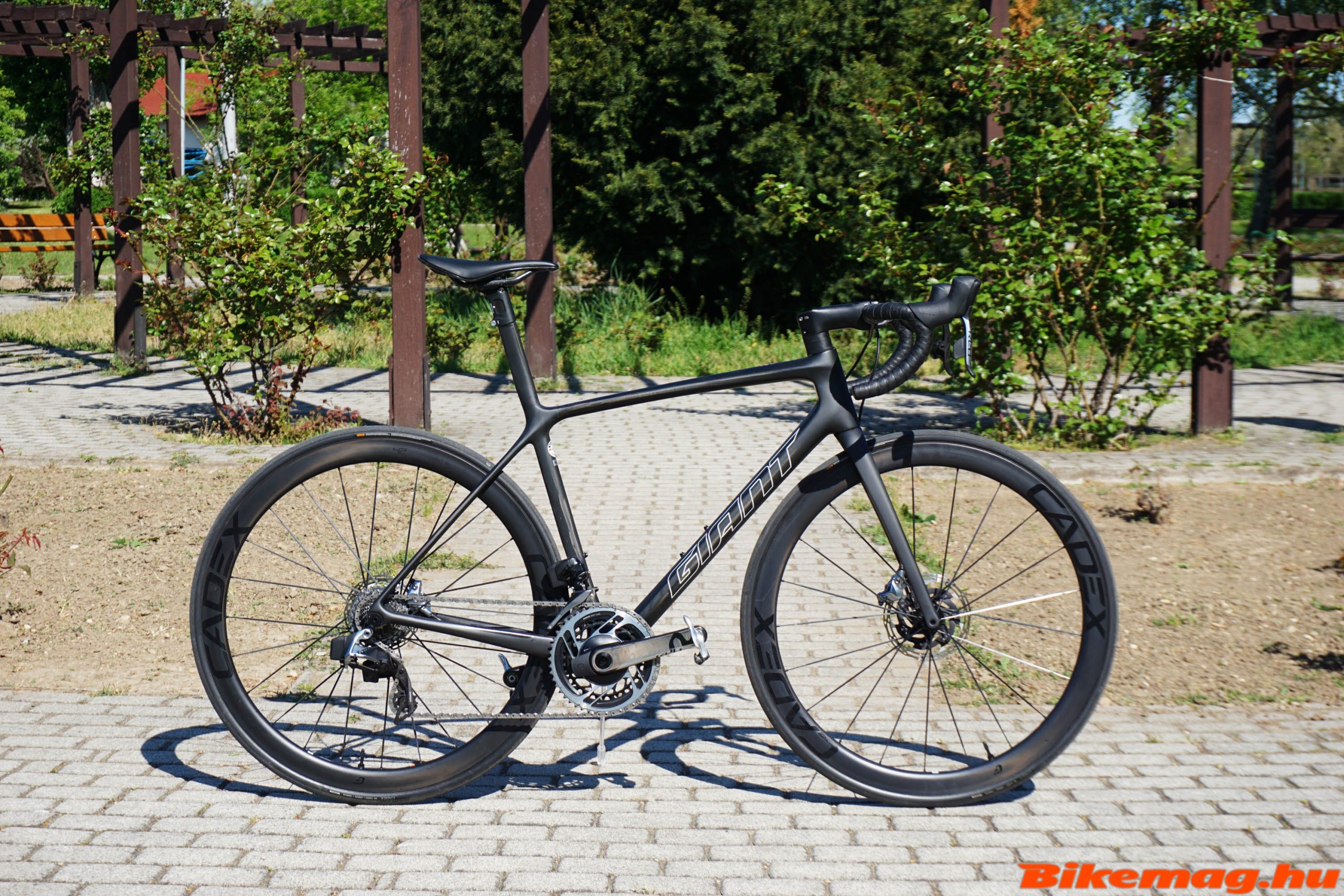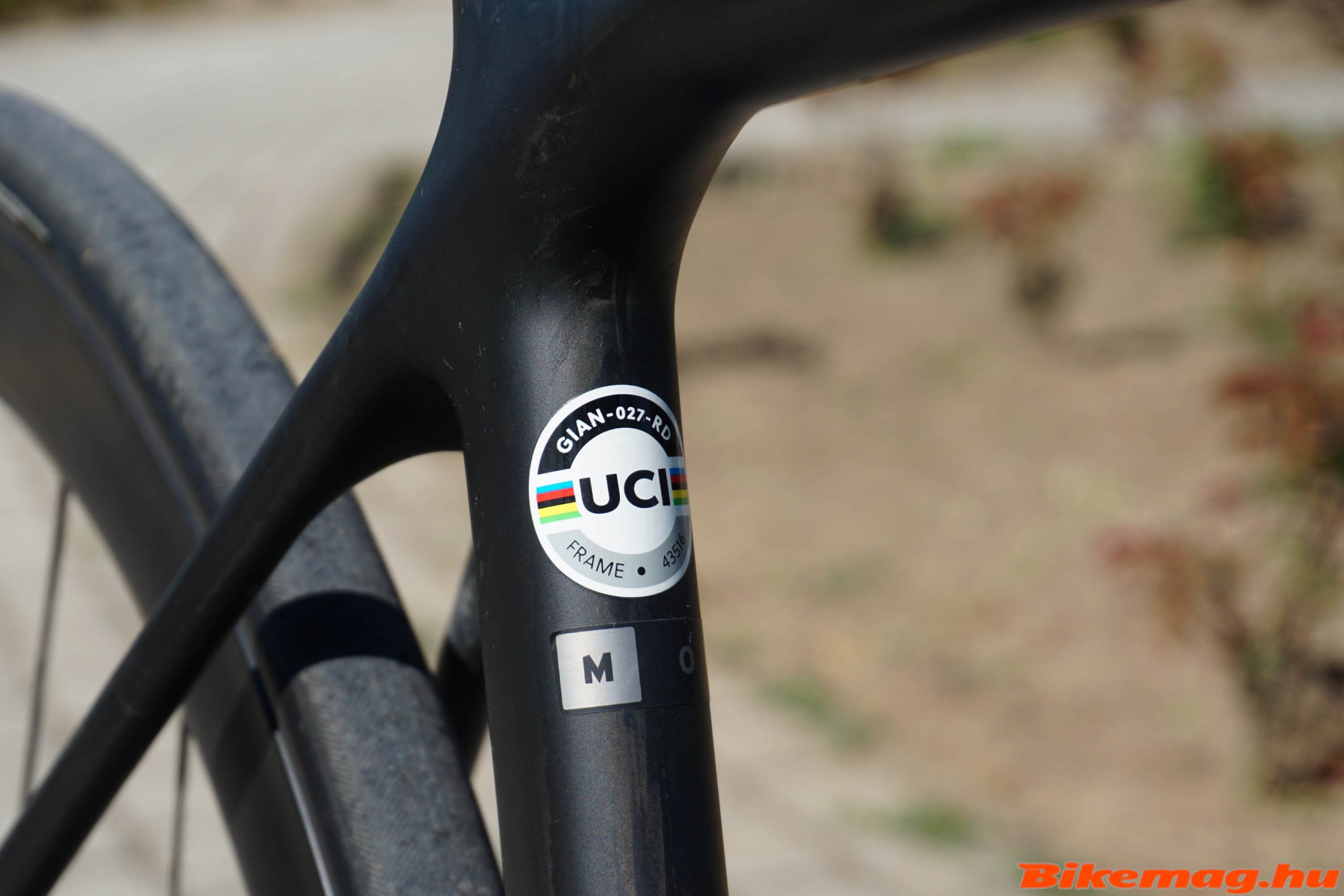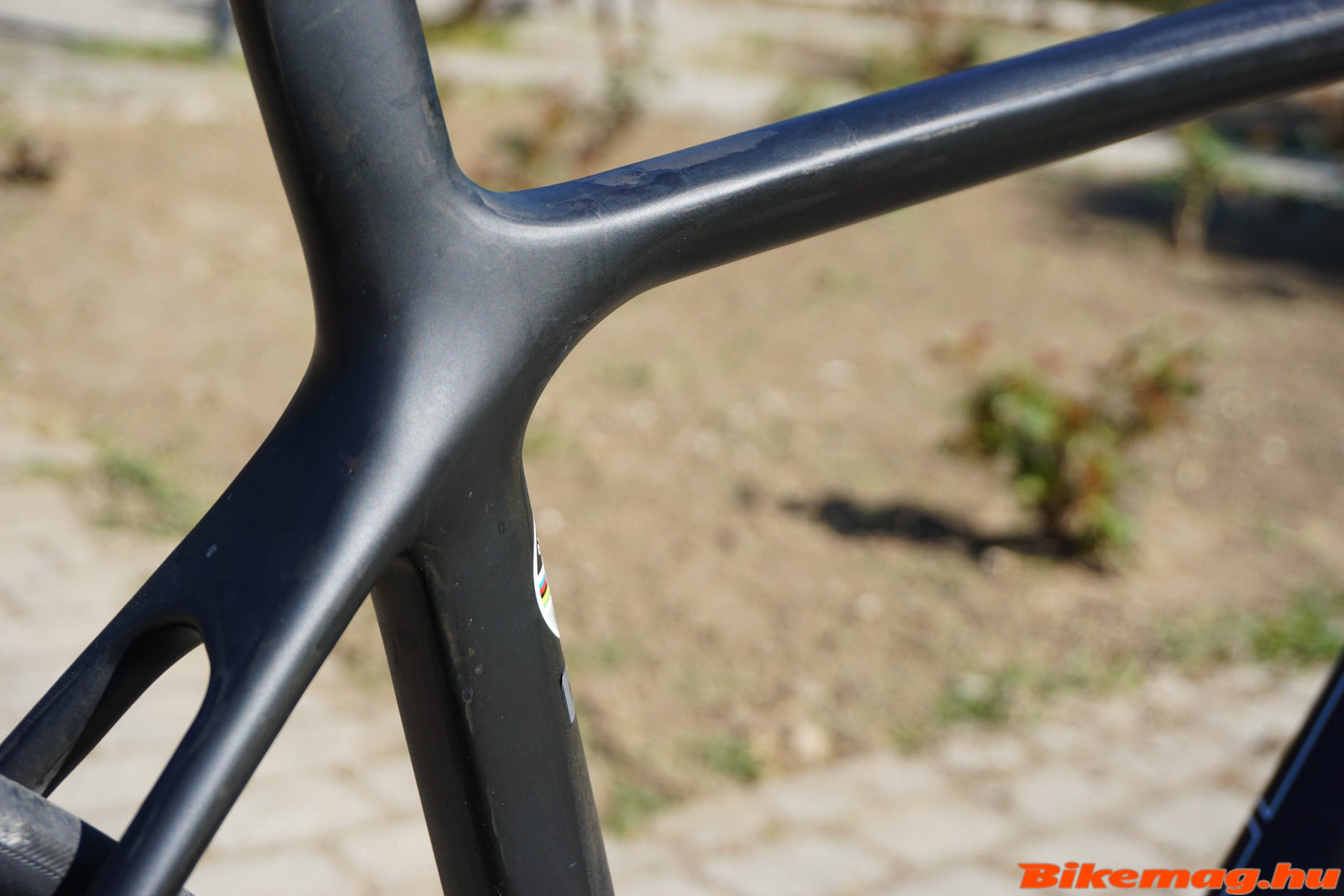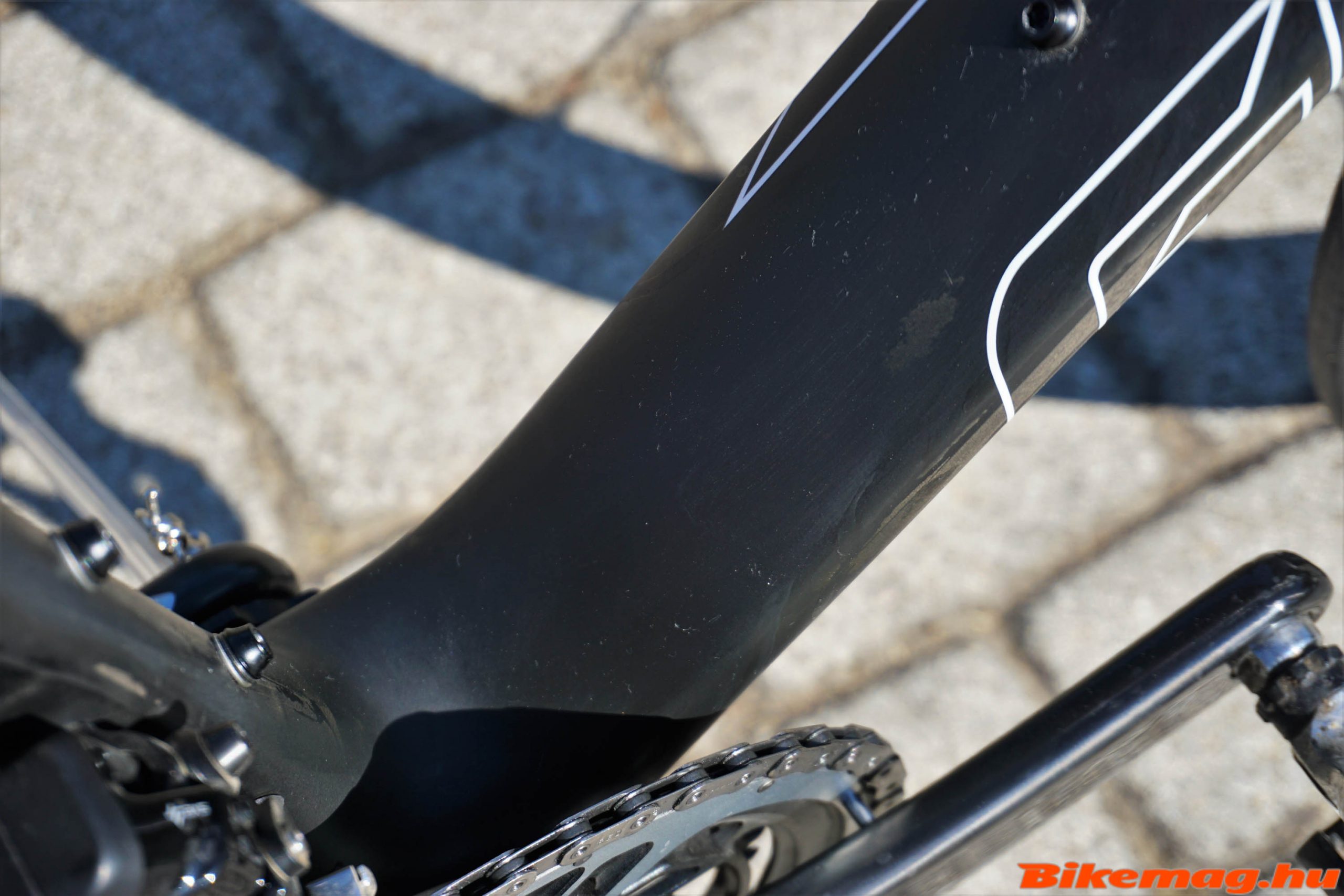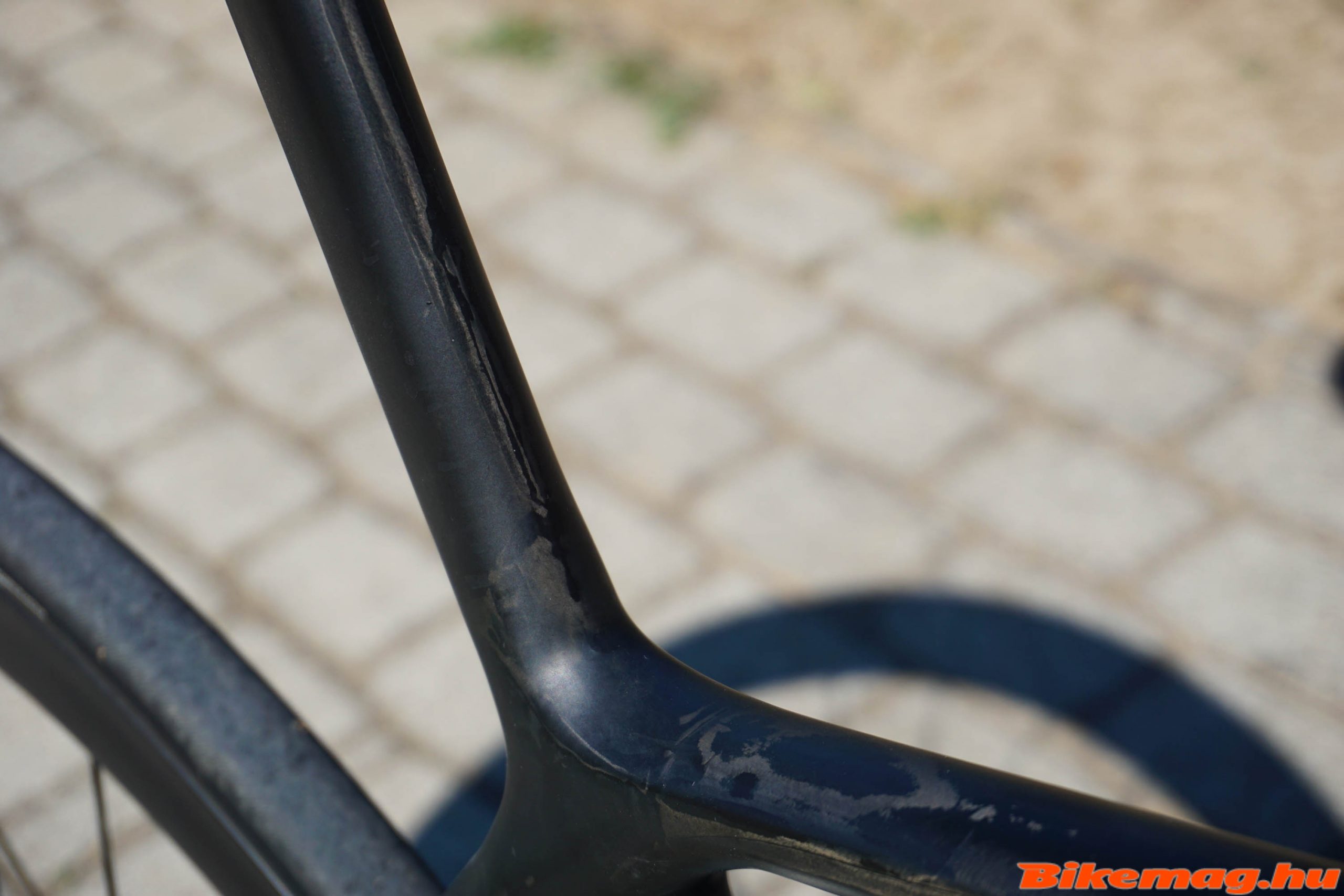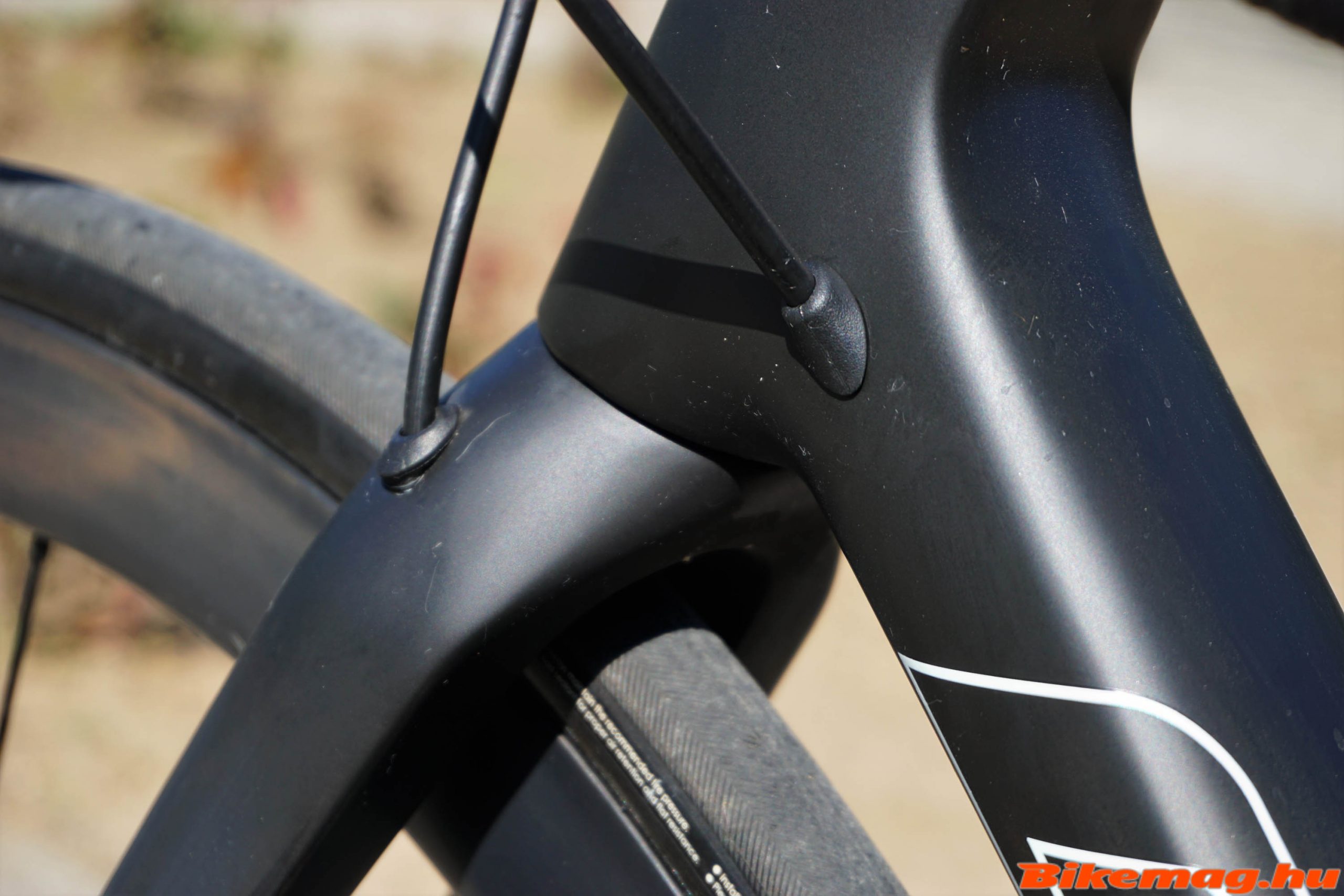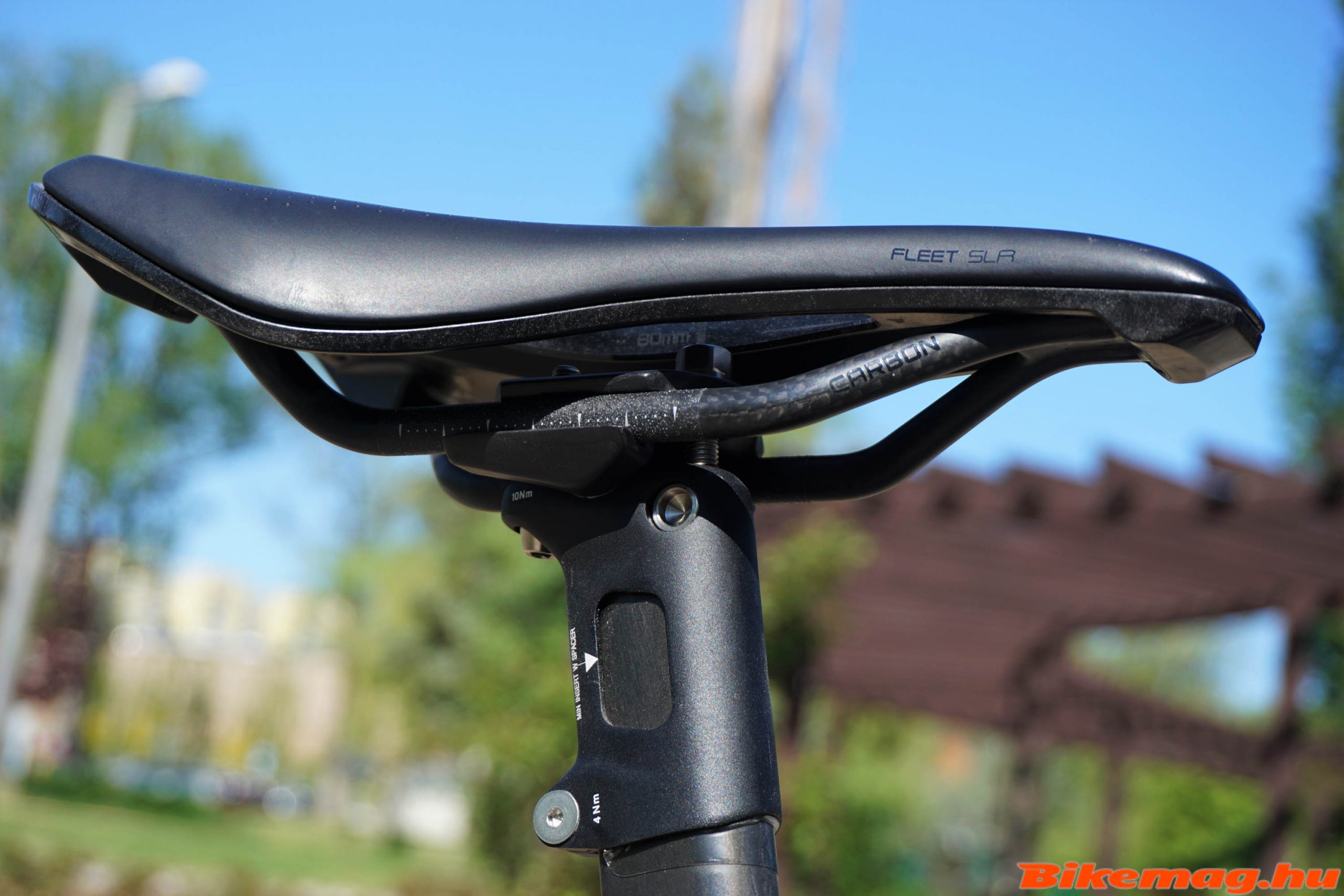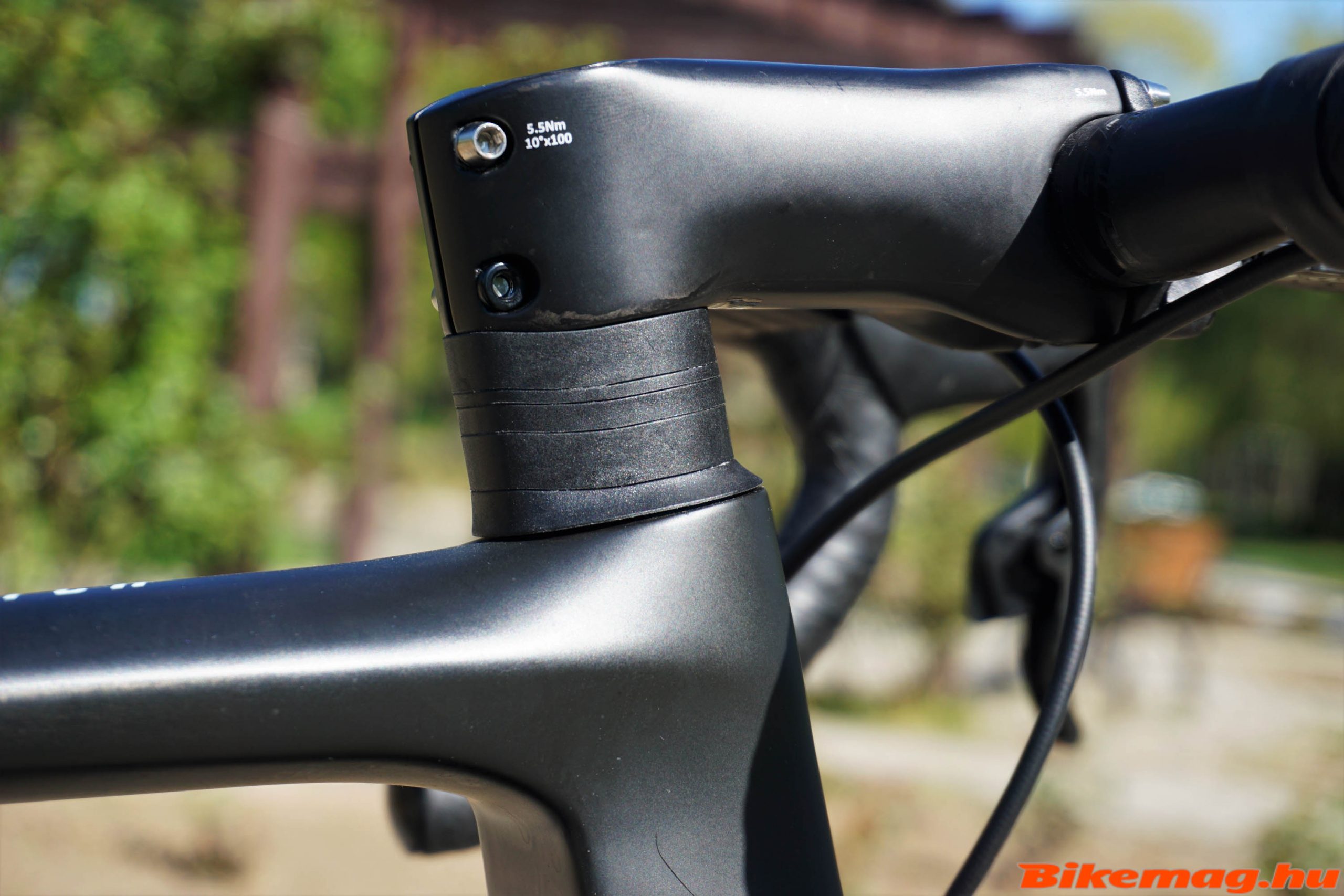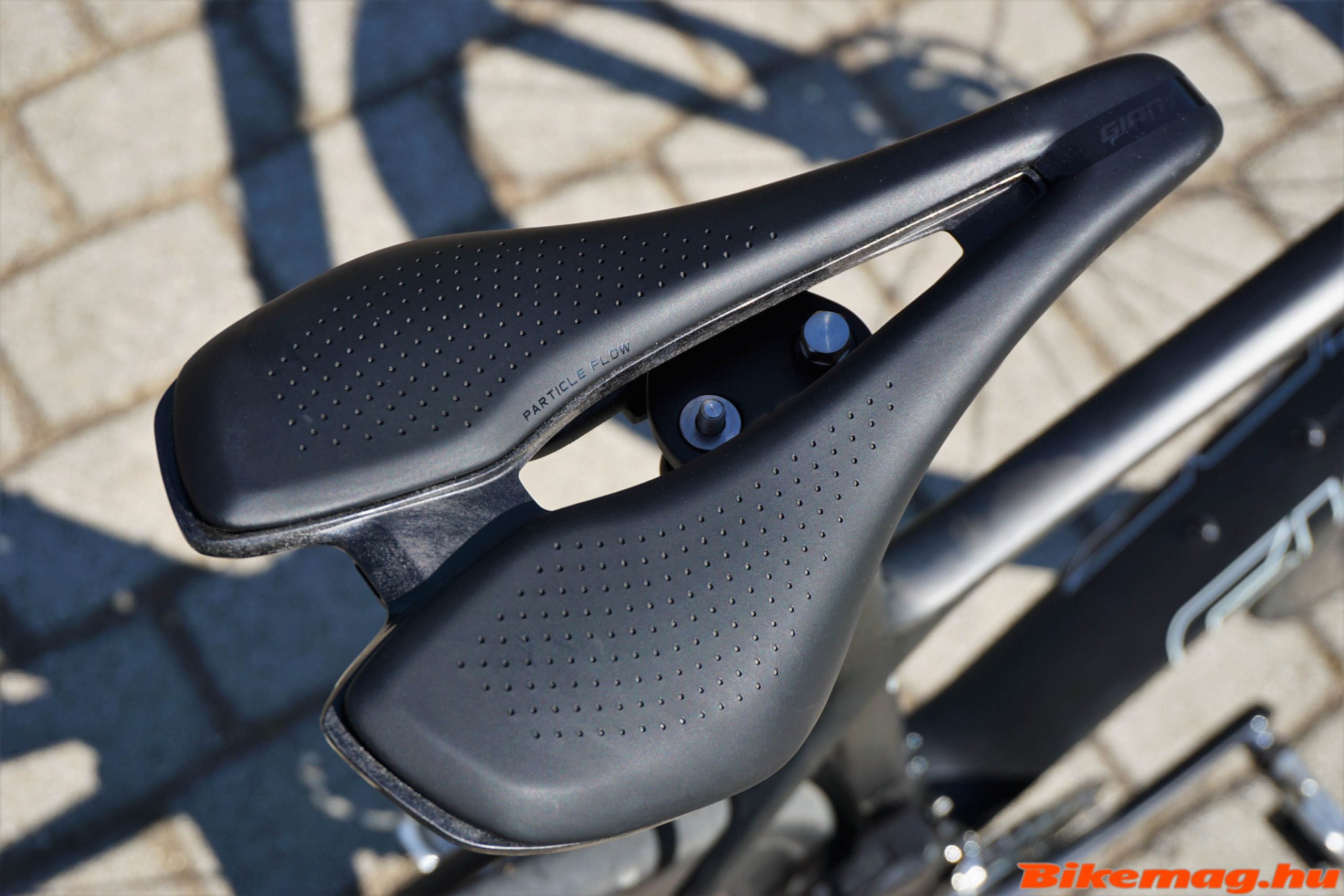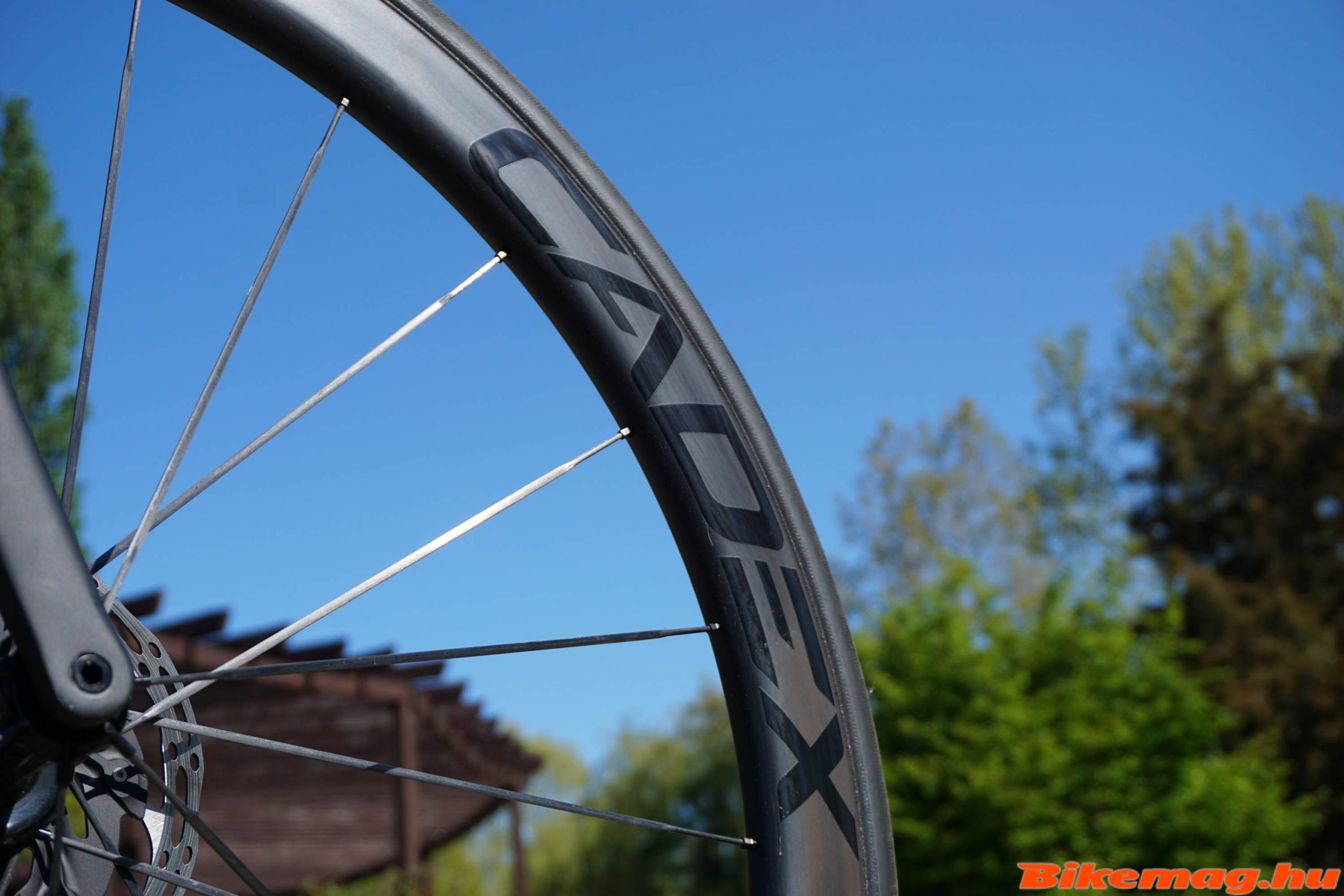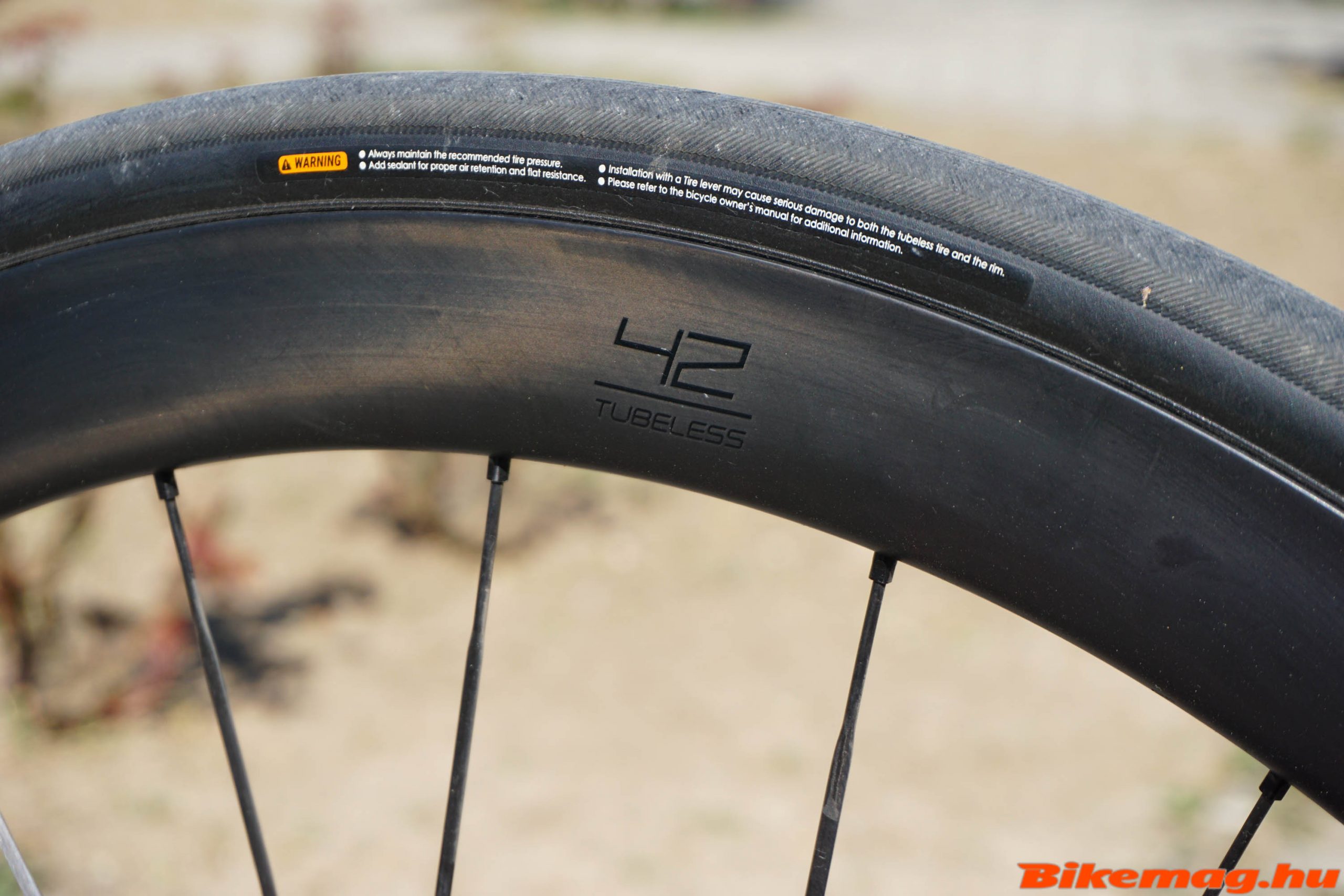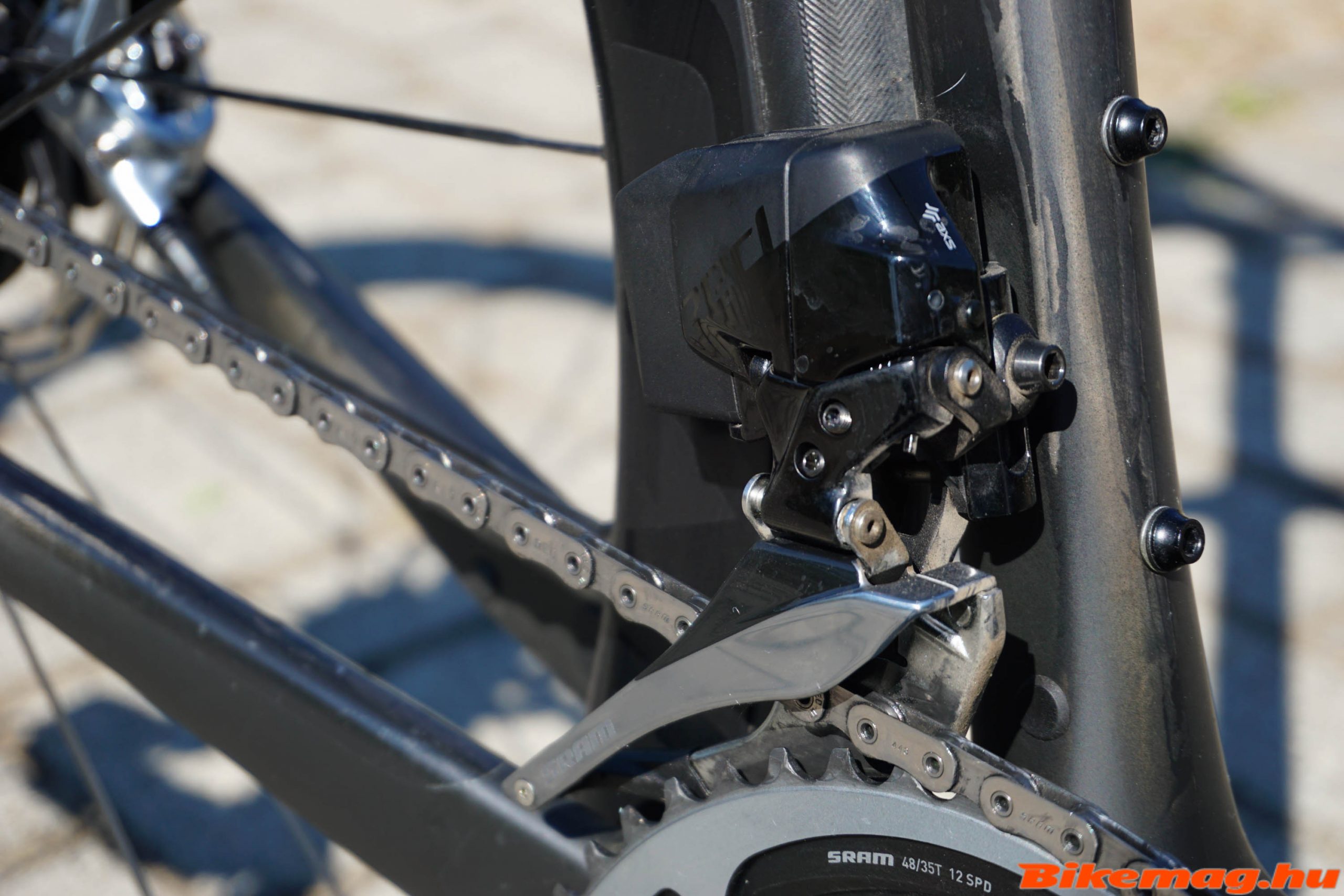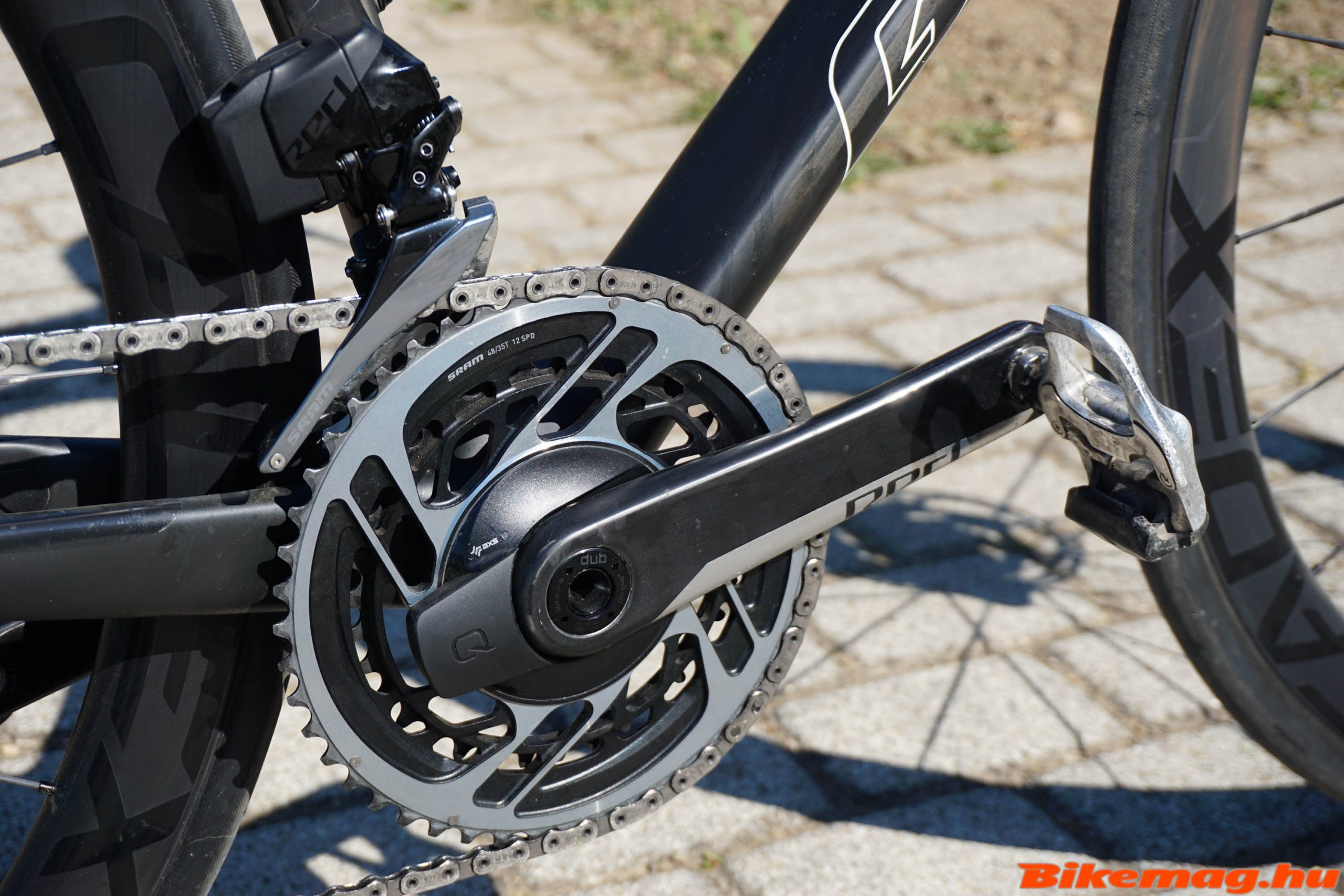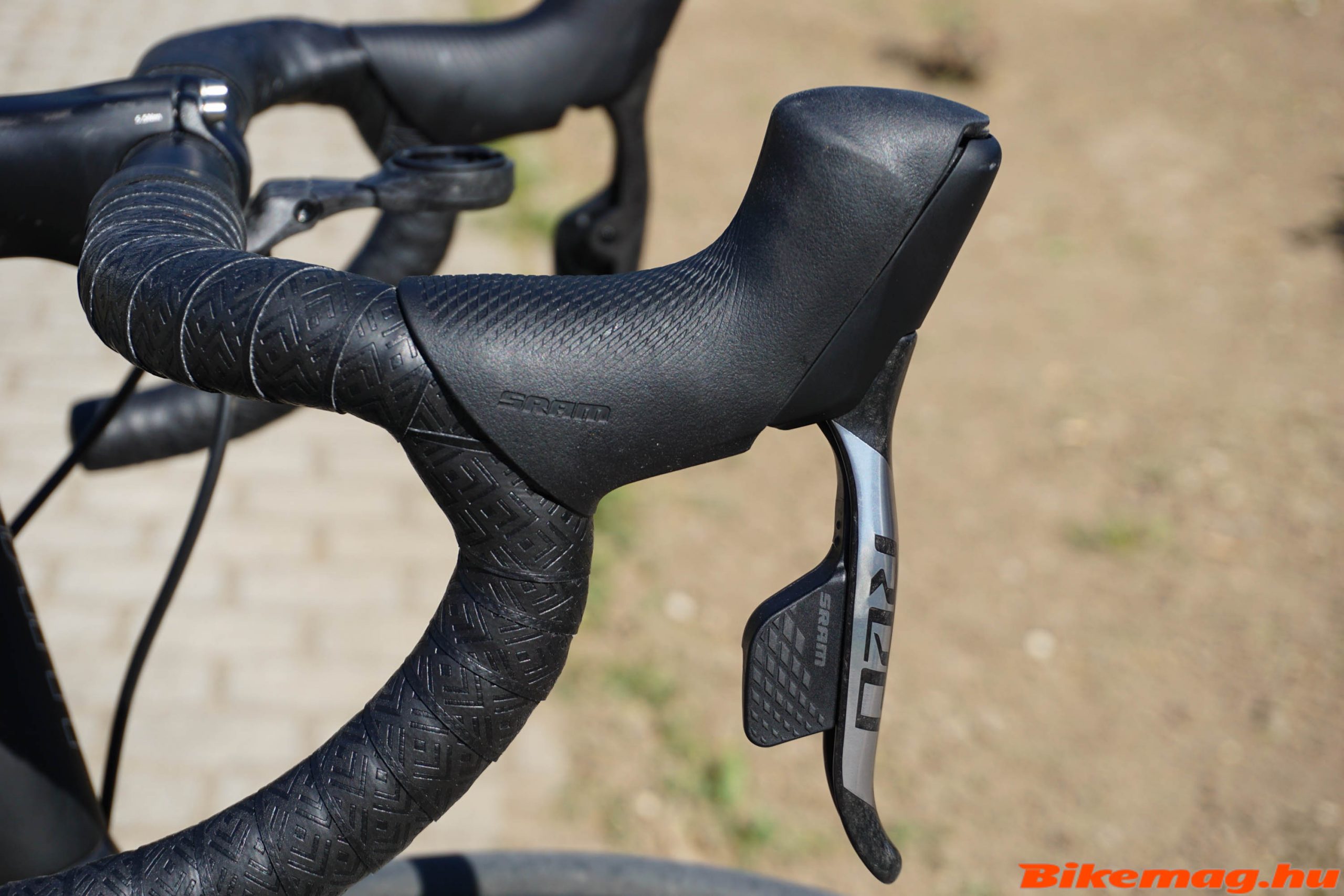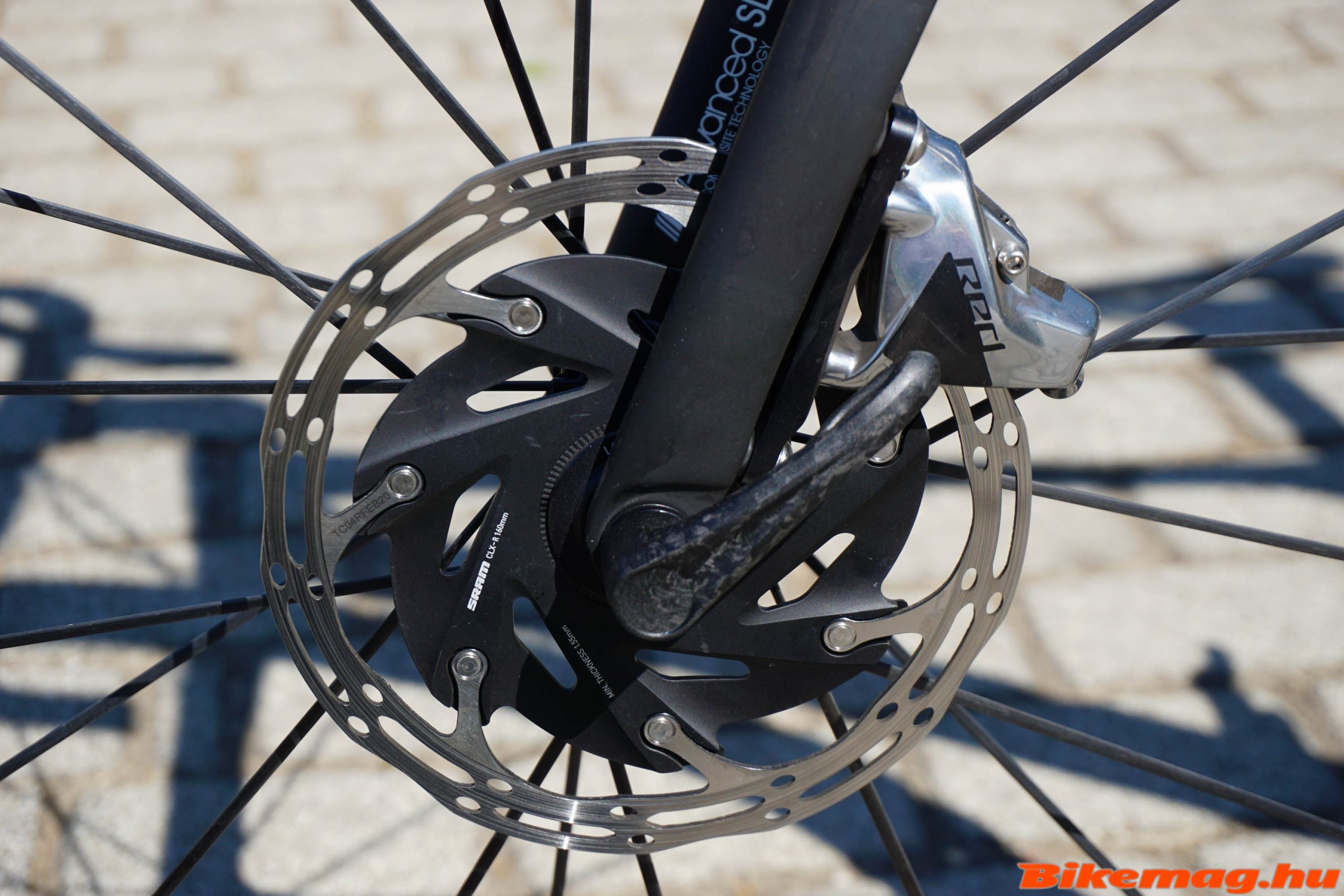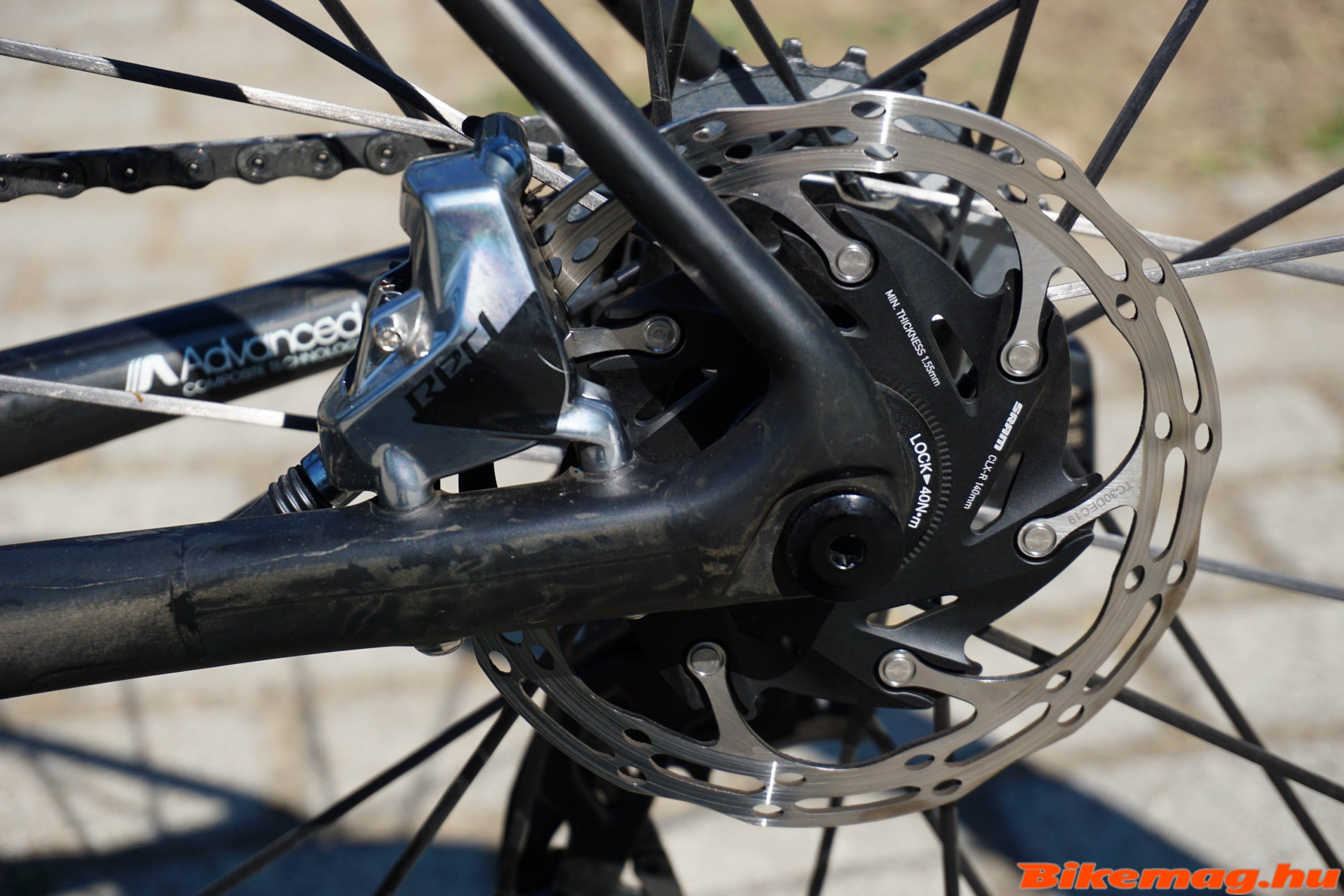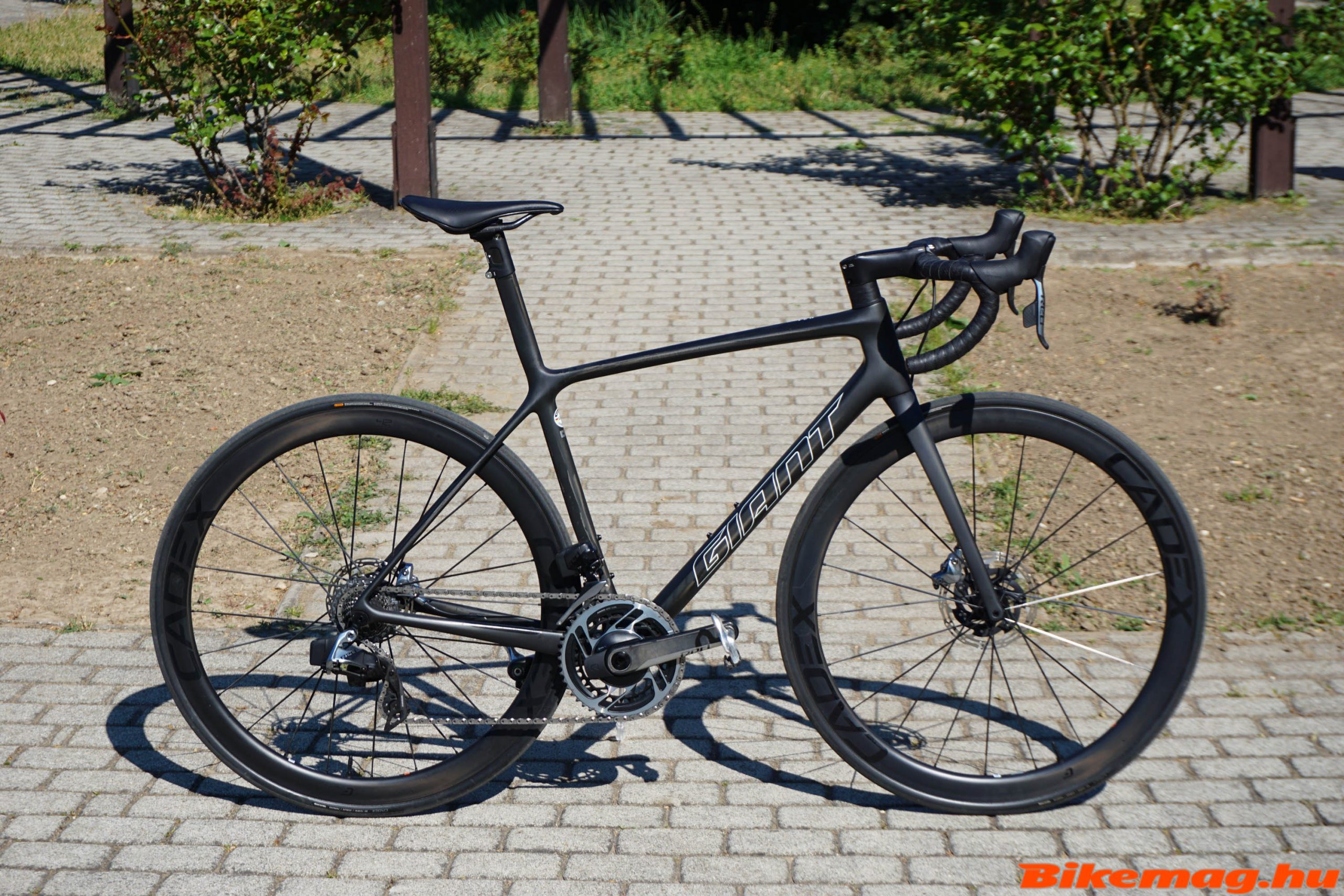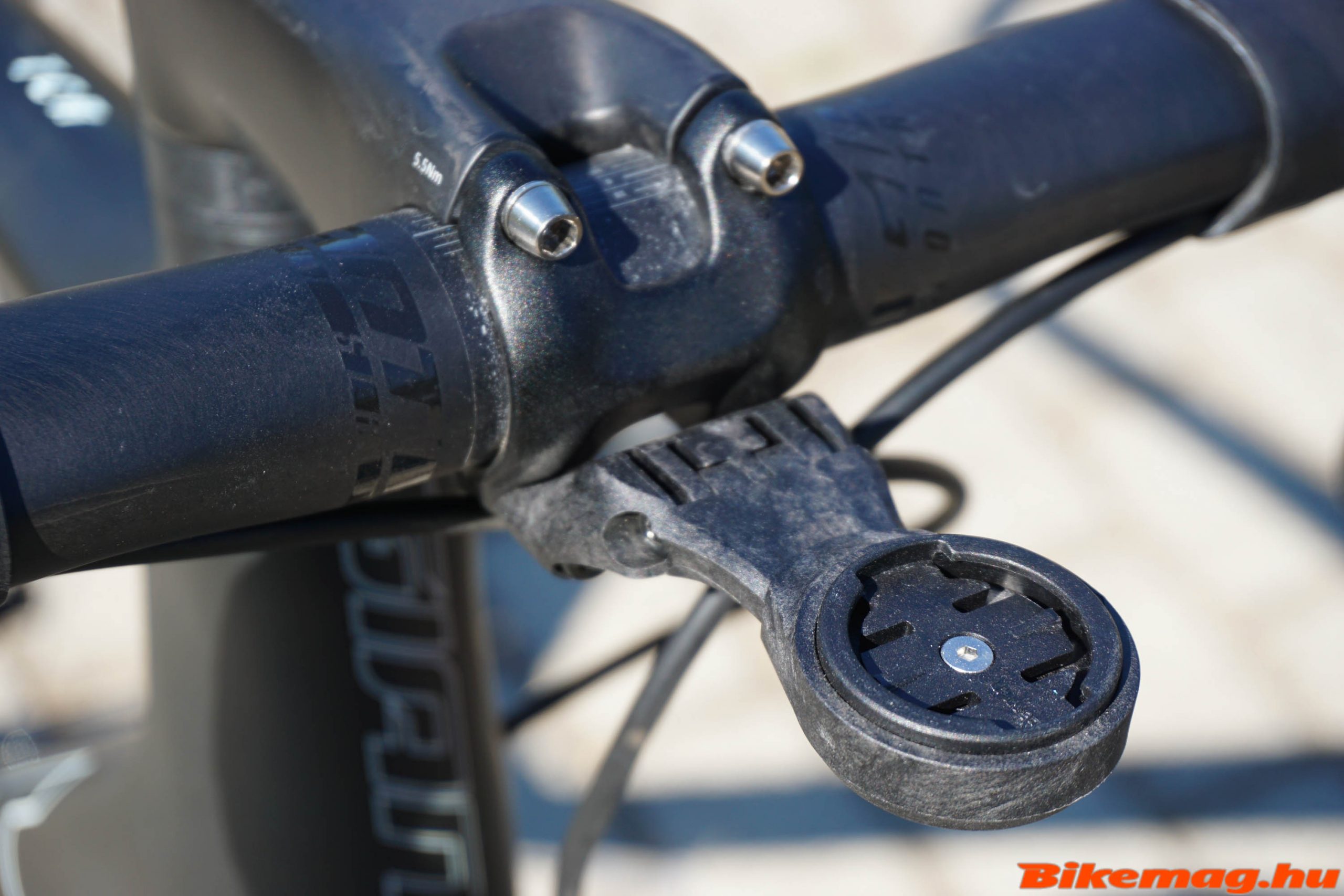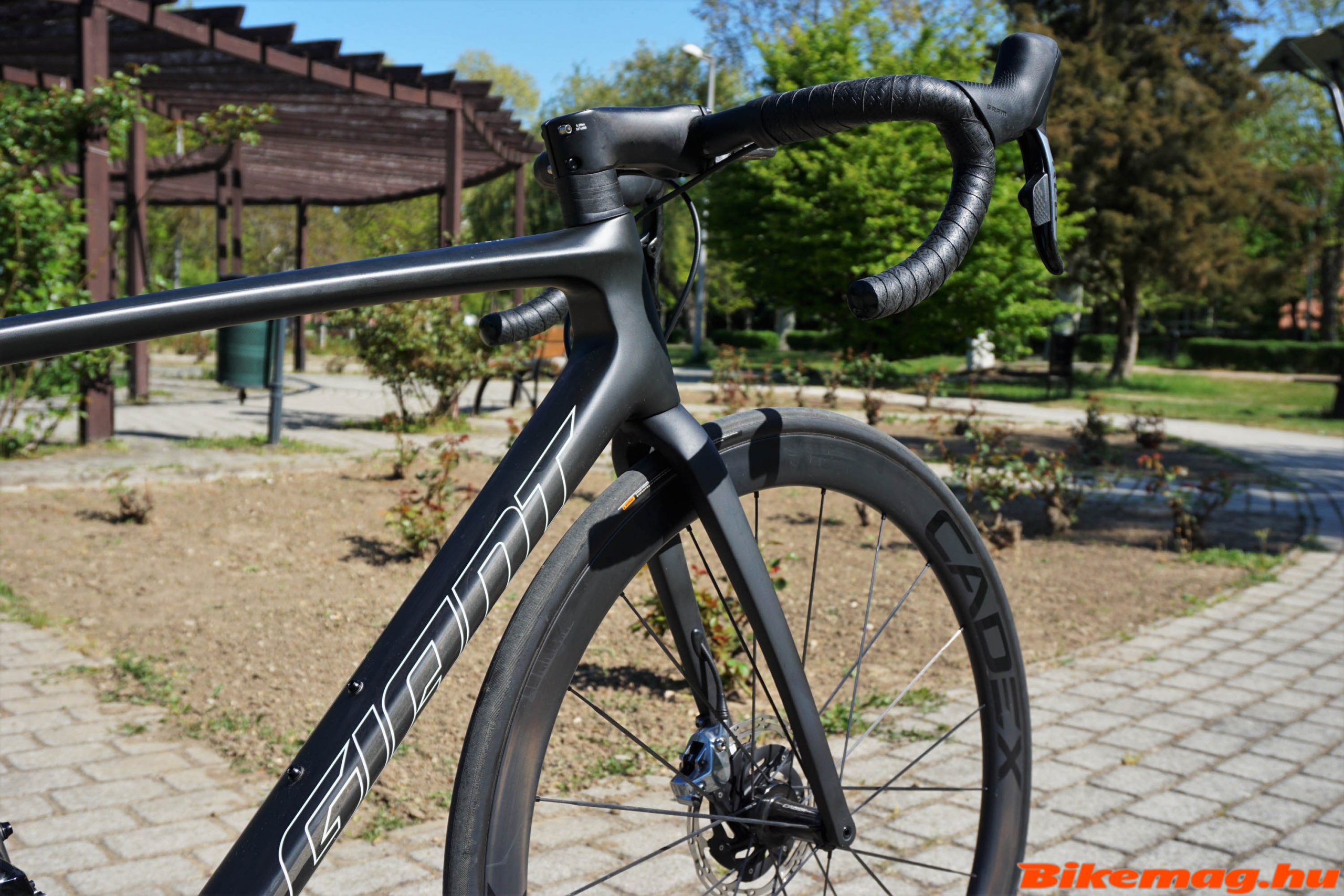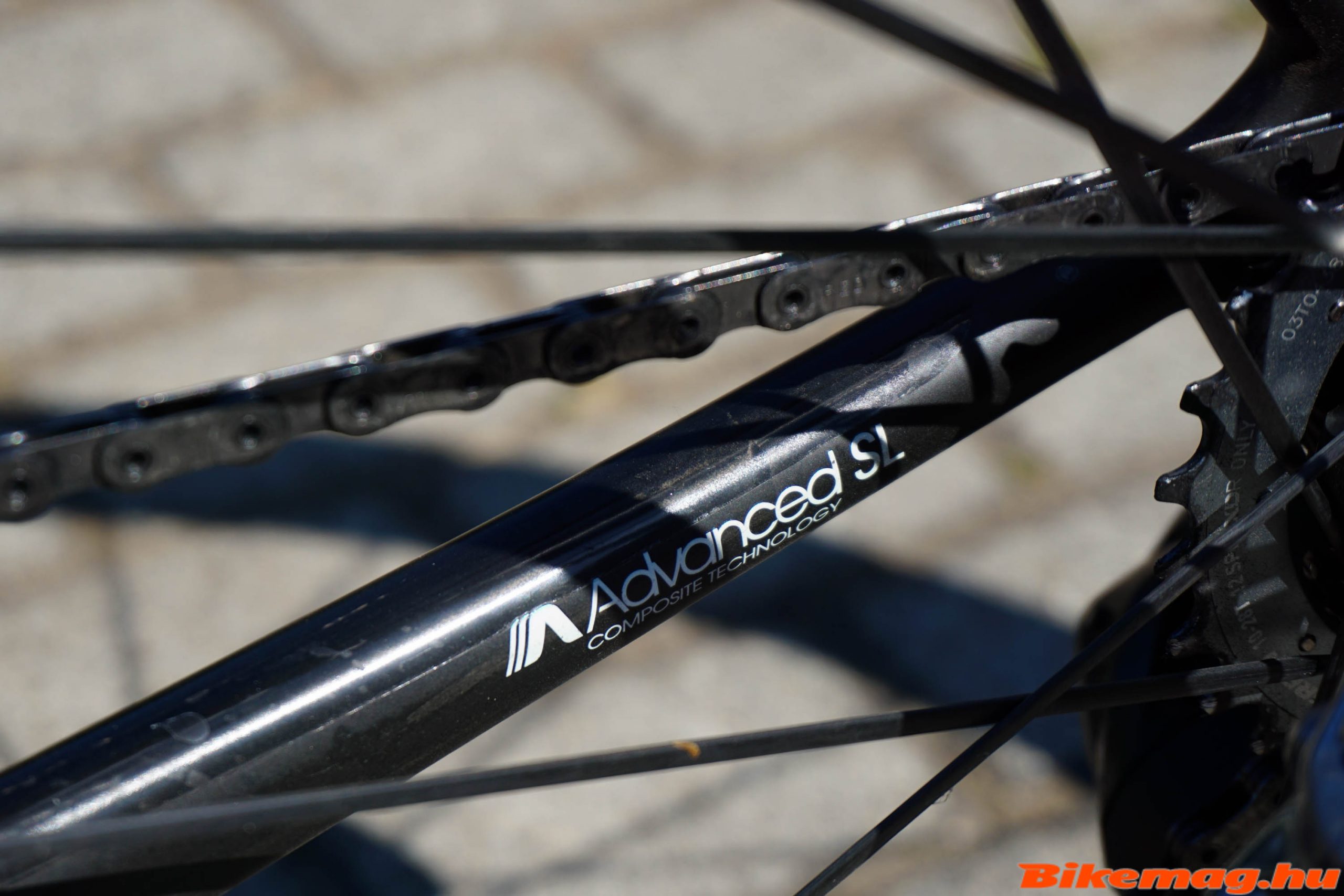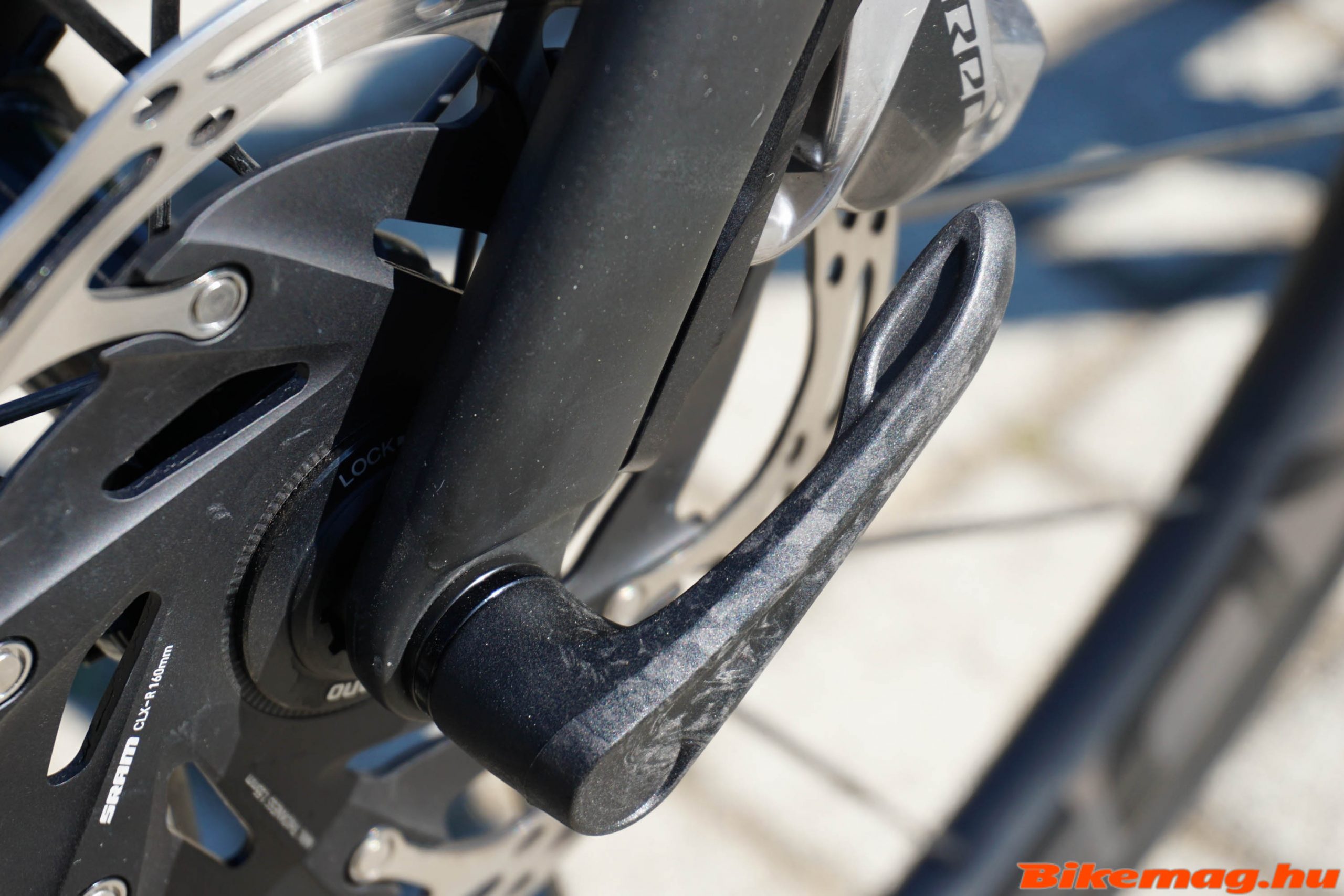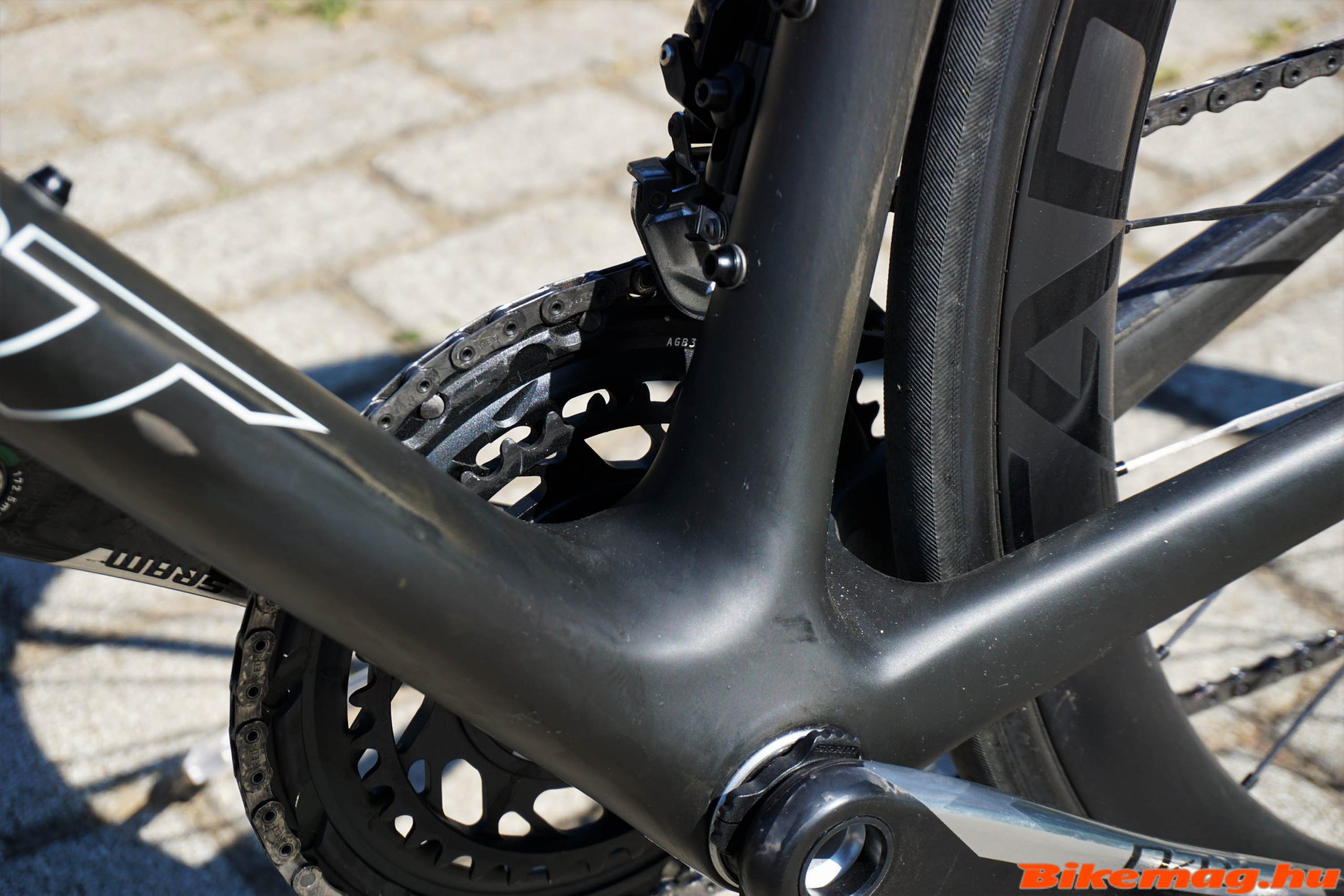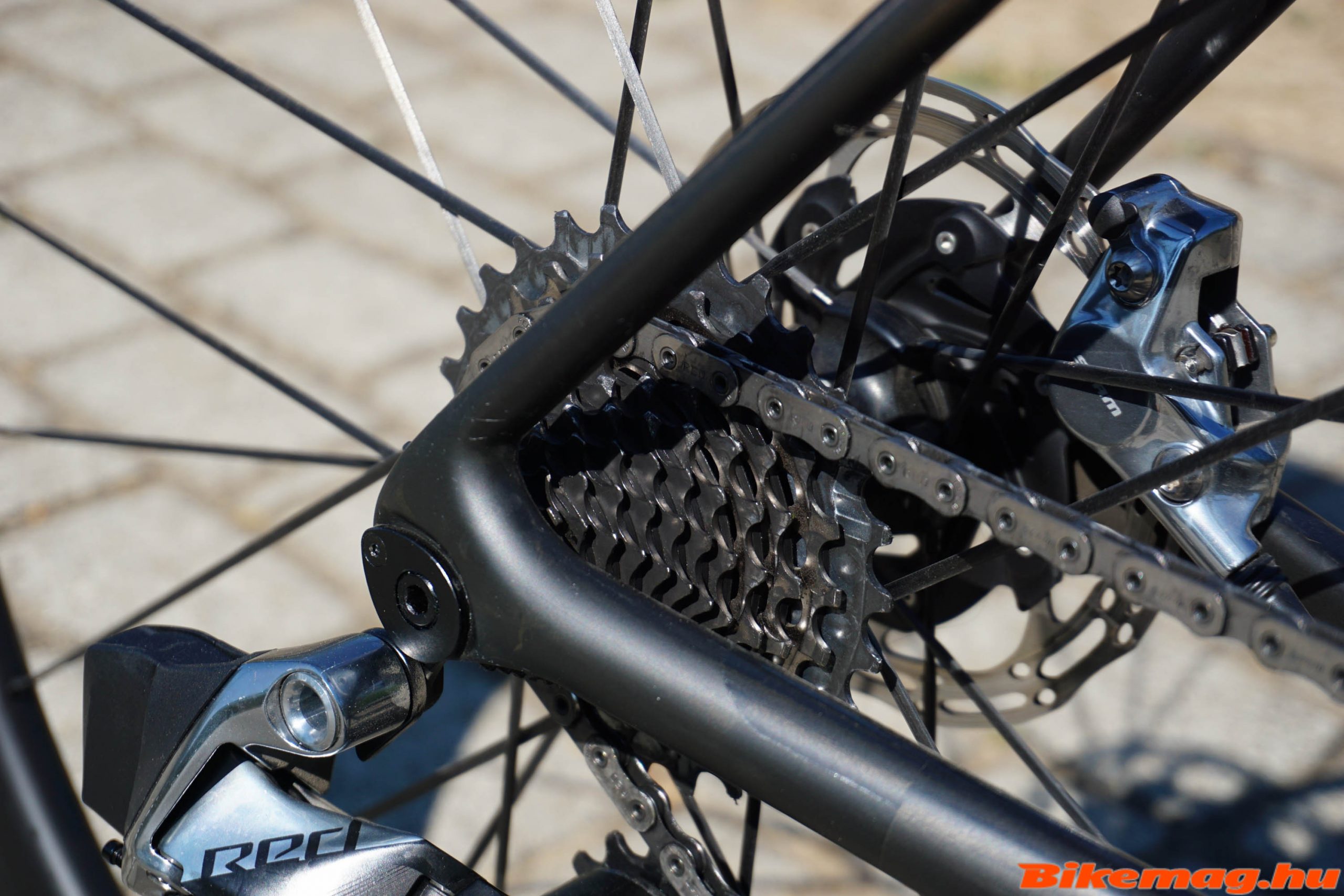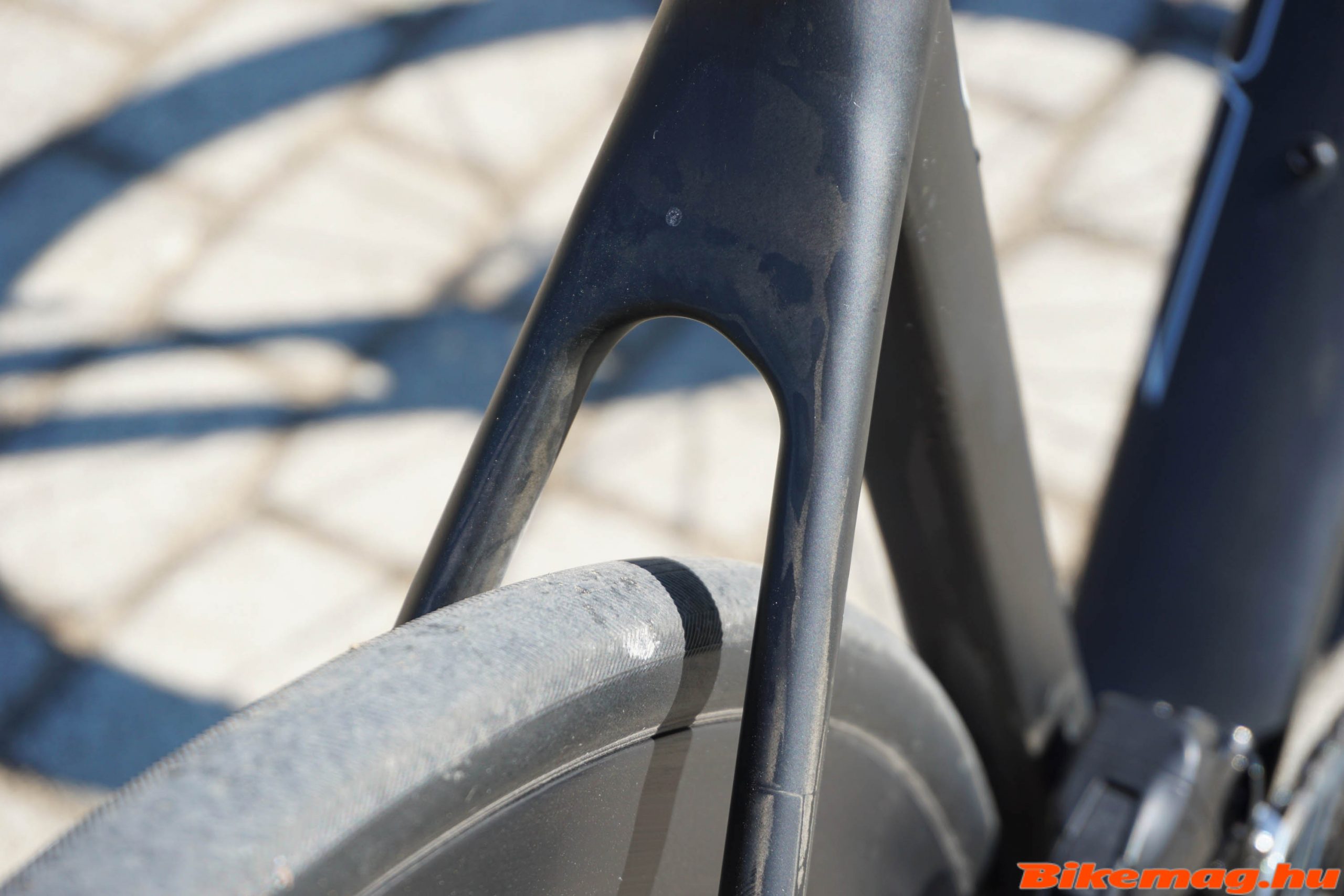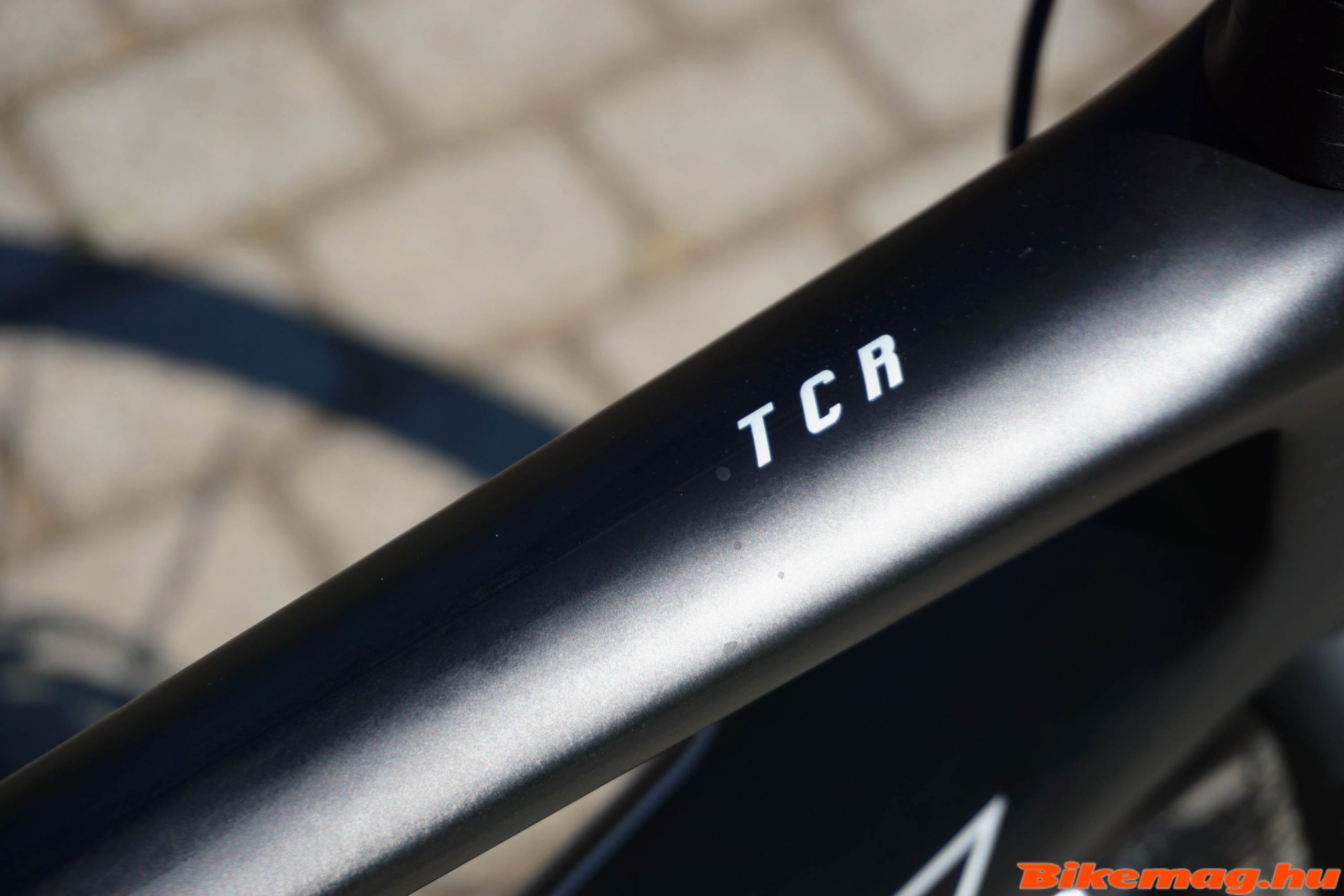Days after the new Giant TCR Advanced has been officially unveiled, we can already hand over our experience to our readers. How come? Thanks to the efforts of a more than willing distributor, I’ve had to chance to spend a few months with a pre-production version of the brand new top-of-the-line road disc bike from Giant.
The fairy tale-like story goes like this. Back in January the BikeMag staff was in discussion with the distributor of Giant bikes in Hungary about the possibility of testing the new Giant TCR Advanced SL. There we were told that if all goes according to plan, one of the bikes showcased at the Taipei Bike Exhibition in Taiwan will be shipped to Hungary in mid-March. This was the moment when the corona virus situation worsened in the Far-East, turning all plans upside down for both the brand and its East European distributor.
From the point of view of testing the new Giant top road model, things couldn’t have turned out any better. Due to the intervention of Covid19, I received the bike much earlier than expected, and the European shutdown meant that I had the chance to ride it for nearly 2 months before I was able to send it on its way. And although I wasn’t told which model version would land on my doorstep, it turned out to be the absolute top of the range one, the Giant TCR Advanced SL 0 Disc.
Before the arrival of the test bike in mid-March, I did some legwork by watching an online video for industry insiders about the new 9th generation TCR Advanced. So by the time laid my hands on this amazing rig I pretty much knew what to expect – at least in view of its technological merits. But when I learned that it was actually the top-of-the-line model equipped with no less than a complete SRAM RED eTap AXS groupset, things got a little more interesting. “Well” – I thought to myself, “I’m more than happy to sacrifice myself for the greater good of humanity!”
Let’s see what the new Giant TCR Advanced SL is about! Giant essentially did a complete makeover on the TCR Advanced, but regarding the styling and the shapes, they adhered to the previous TCR Advanced design. Hence most will immediately recognize the 2021 version as the new iteration of a TCR Advanced. By reading comments on the internet, it seems a lot of people don’t take to the styling of the TCR range, but I tend to belong in the opposite camp. I distinctly relish its plain and simple lines. I have to highlight that although as a complete package the new TCR Advanced is reminiscent of the older generation, the tubes sections have been completely revamped. These are now much more round and less elongated, resulting in less air resistance – especially when the wind is not blowing completely from the front. As we all know wind tends to presents itself in all shape and form!
According to tests conducted by Giant, the new bike is 34 seconds faster than the previous generation, measured at 200 watts and over a 40 km distance. In addition to the better aerodynamic performance, the downtube is drastically widened and made vertical shallower at the bottom bracket area, which provides some benefits from the perspective drive stiffness. To some up the changes in frame design, the new model was aimed to maintain the hitherto excellent weight-to-stiffness ratio of the TCR Advanced SL paired with lower air resistance.
In addition to the tube shapes, the frame has received a completely new carbon composite material designed in-house by Giant engineers. The new TCR Advanced SL frames are said to be lighter and stiffer, which should come as no great surprise since we’re talking about the world’s largest bicycle manufacturer with correspondingly vast hi-tech carbon expertise. In addition to the change in composite technology a brand new production line employing robots have been developed and installed at the factory in order to improve manufacturing.
Another place where some weight has been saved was on the finish. Giant claims that the least possible amount of paint was used for the new frame version which saves 50 grams compared to the standard seven layer finishing used on previous TCR Advanced generations. I may be mistaken, but I see virtually no paint layer on the test bike’s frame as the carbon fabric is clearly visible under the lacquer!
Fortunately, the current trend of full integration has been sidestepped for the TCR Advanced and Advanced SL frame platforms. The shifting (if applicable for the given model) and the brake cables run hidden inside the down tube, but Giant didn’t take the extra step to route them through the steering column. The more sophisticated solution often causes excess difficulty, so I wholeheartedly welcome this conservative approach. Anyway, Giant bikes have always enjoyed a reputation for exemplary cable routing, which may be hard to confirm on this top model, since it has wireless shifting as well as hydraulic brake cables. These are never the source of any grief, no matter what cable routing solution the frame manufacturer chooses to punish the riders and shop mechanics.
The quickest way to distinguish between the TCR Advanced and Advanced SL model variants is to take a glance at the seat post. The top-of-the-range SL models all have the integrated seat mast design, while the “plain” Advanced and Advanced Pro models are equipped with the more conventional clamped aero seat post solution. The integrated construction is a divisive issue within the cycling industry. There are certainly pros and cons of the design, and practicality for the owner could also be a consideration. For example saddle height is more difficult to adjust in case of the integrated mast, and ISM type bikes tend to offer a bit less in the way of comfort, which may be one of the main reasons for manufacturers abandoning the design for most consumer-oriented road bikes. Giant is an exception as they continue to stick to the lighter and in principle more enhanced integrated mast for their top-tier frames. This is most likely to be a conscious decision, based on the manufacturer’s vast know-how of carbon technology.
Taking a glance at the equipment on the Giant TCR Advanced SL 0 Disc frame, we can quickly establish that virtually every element of the bike is a Giant-branded product. The list includes the handlebars, the stem, the saddle, the wheels and even the tires. All parts but drive train and the brakes feature the manufacturer’s logo. This is no great surprise since Giant is renowned for designing their own equipment, not primarily to save costs, but to offer better, more advanced solutions, made specifically for their frame designs.
We should add that these in-house accessories are all worthy of a bike of this pedigree. The cockpit setup consists of a carbon handlebar, a carbon stem, a carbon saddle, all well-made, top-quality parts. The special feature of the handlebar is the aero profile in the lower section complementing the upper part next to the clamp. This is unusual, a solution presently not adopted by brands offering road handlebars. Unfortunately the new design turned out to be a disappointment for my part, as the narrow section tended to cut into the palm causing considerable discomfort. Since we’re all anatomically different, my subjective opinion cannot be generalized. But on the whole I have to admit that Giant’s bar design has been a hit and miss in my experience, I usually ended up swopping the bar when I had the bike long enough to warrant the hassle of taking out the tools. The stem is also quite unusual since it’s made of carbon composite as opposed to aluminum, and just like the handlebar, it’s brutally stiff. This top Giant carbon cockpit may not be the ideal setup for the notoriously bad Hungarian road infrastructure. On the other hand, professional racers will certainly relish the outmost stability these products provide. Finally the saddle has a trendy modern shape with a center cutout. It’s also relatively short and wide, and I found it to be quite comfortable for the most part. Nevertheless, it’s not a design that’s likely to please very rider, better suited for those who spend a lot of time in a saddle day in day out.
The wheel on the top-end bike has the Cadex logo, which might be familiar to many, since Giant carbon bikes were marketed under this model name back in the 90’s. So it’s also essentially a Giant-branded part. The carbon composite rim is 42mm high and has a hookless construction, in addition it comes with a bona-fide tubeless tire, just like all Giant road bikes. As a proper top-of-the-line wheelset, the Cadex is built with aero bladed spokes, lightweight hub bodies and internal mechanics. Apart from the carbon rims, these are more or less the main ingredients of a great professional road wheelset.
In my view the 42 mm rim profile is the limit to what can be used on a day to day basis, being able cope with various wind conditions riding on roads with normal traffic. So the Cadex is about as aerodynamic the cyclist can safely go if the set is used for training as well as competitions. I didn’t experience much trouble in the crosswinds, although bigger gusts sometimes caught me out if I wasn’t paying attention. I’m convinced that much though has gone into the design of this wheelset, and the wide rim profile is probably one of the attributes that make it ridable in most conditions.
Moreover the wheelset is quite rigid, there is no sense of any wobble even under larger riders. Despite the sense of rigidity – if used in tubeless setup – it feels quite comfortable, especially at lower pressures. Being a big bloke I could safely ride these wheels at 6 bar pressure without any problems, perhaps I could have gone even lower if I had been more fearless. And these figures are in reference to using the factory-supplied 25 mm tires! I must highlight that the new TCR Advanced disc frame accepts rubber as wide as 32 mm. Mounting such tires permits the average cyclists to go even lower in pressure in order to enhance comfort and handling. (In case of the rim brake version, 28 mm is upper limit for the new TCR Advanced.)
We have finally arrived at shifting and braking! Having seen what components this TCR Advanced SL 0 Disc has been kitted out with, this is probably the part of the review many of you have been waiting for. Yes, we have a complete SRAM Red eTap AXS groupset on this bike, featuring wireless electric shifting, 2×12 speeds and hydraulic disc brakes, all the up-to-date technologies that make road cyclists salivate! As for the drive train Giant opted for a 10-28 rear cluster paired with 48/35 front chainrings, plus an integrated Quarq power meter to boot. You heard it right: this bike features a full-carbon crankset with a top-tier power meter right from the factory!
I should start by clarifying that there is no need to be afraid of strange gear combinations found on the TCR Advanced SL 0 Disc. This setup covers the more or less the same gear ratios as a normal semi-compact system: the 48/10 gear is likely to be high enough even for the strongest of riders, and there is nothing to fear when tackling steep inclines either. On the other hand, the brakes are something I’m not convinced about. I had many problems with both the front and rear brakes. They tended to be quite noisy, including an annoying brake rub which was not down to incorrect setup. The noise came and went, something I rarely experienced on Shimano disc setups. Moreover I had similar experience last summer with another SRAM disc brake road bike on test.
To end on a good note, the shifting is mostly spot on. It works flawlessly at the rear despite the 12 speeds, the front is a bit “sleepy”, something I have also experienced on other eTap systems. SRAM seems have trouble designing flawless front shifting: it’s not their forte for sure. There are so many aspects of bicycle technology that SRAM engineers have worked out so cleverly, but sometimes they seem to have challenges with elementary math…
All in all the Red eTap works fairly well, although it could be better and more refined. I have to say that I can now see the point why the CCC World Tour team made the decision to equip the TCR Advanced SL 0 Disc with the Shimano Dura-ace groupset. I would have no hesitation choosing that – or even Ultegra Di2 – over the SRAM Red eTap AXS on this top version of the TCR Advanced SL. For those of you interested in the present groupset, there will soon be another write-up in which I’ll dissect the Red Etap AXS even further.
I’ve now described my experience with most of the equipment found on this bike. However there’s still plenty of important things to talk about, notably the frameset itself! The TCR Advanced SL chassis is truly rigid, efficient, the frame geometry is very agile, and the bike has a nippy character. Exactly how professional riders like their bike to handle. It’s certainly breathtaking how you can turn it into corners. The TCR Advanced SL will remain on the apex, its outmost stability won’t let is front or rear wheel to drift. Rigidity and stability are the key words to describe the bike’s character. The 25 mm tubeless tires are glued to the ground, so the rider will have the greatest control possible. There is absolutely no sign of twisting or bending when accelerating, it’s just not possible to feel any energy loss. Whatever effort is put into the pedal, it’s directly transferred to the road. The TCR Advanced SL gives me what I truly love about road bikes: efficiency and speed.
The outmost drive efficiency has its drawbacks. It didn’t take long to feel a degree of discomfort on our domestic roads as the TCR Advanced SL transmits road buzz just as efficiently as drive force. The integrated seat tube is quite stiff as well, not springy like most modern carbon seat posts. The head unit of the mast is able to move some, but not enough to relieve the rider from the effects of bad road surface. If this would be my everyday bike, I’d also install a bit more flexible bar and stem, as some loss efficiency would be more than offset by the dampening I longed for with the top race-oriented setup found on this test model. Another niggle is that these cockpit parts tended to slip when hitting potholes, which our road infrastructure is unfortunately cursed with. I tried to tighten the bolts to the maximum torque settings recommended by Giant, but no avail: it didn’t completely stop the slipping.
Due to its aggressive racing frame geometry and the overwhelming sense of rigidity I would not recommend the TCR Advanced SL 0 Disc for general road riding. The Giant Defy which we tested last year would be a much better choice for such usage, offering much more compliance, comfort and more confidence-inspiring handling. Undoubtedly the TCR Advanced SL will win the town line sprints and the bragging rights that accompany this. In addition, this professional-looking bike is likely to impress friends and fellow riders much more than the Defy. But you should keep in mind that the TCR is a competition machine designed for primarily for professional racing, which has been proven by several wins in World Tour stage races and one day classics. But when it comes to the enjoyment of road riding, I believe there are much better choices from the Giant range.
Even though everything on this bike is top-tier, I wouldn’t hesitate to swap out some parts for the sake of better ride experience. The first to go would be the handlebar and the stem, followed by the saddle. Then I’d install wider tires, maybe even go up to 30 mm in order to tame this full-blooded race machine into something an amateur rider could truthfully enjoy. These changes would probably result in the perfect road bike for my tastes, since the TCR Advanced SL offers such efficacy I have yet to find in any bike I previously ridden.
As I have already mentioned at the beginning, the TCR Advanced, TCR Advanced Pro and TCR Advanced SL models have all be completely revamped for 2021, each comes with a range of equipment to suit the needs and the budget of most demanding road bike enthusiasts.
Measured weight of the test bike in this review: 6.7 kg.
More information can be found on the distributor’s website.

